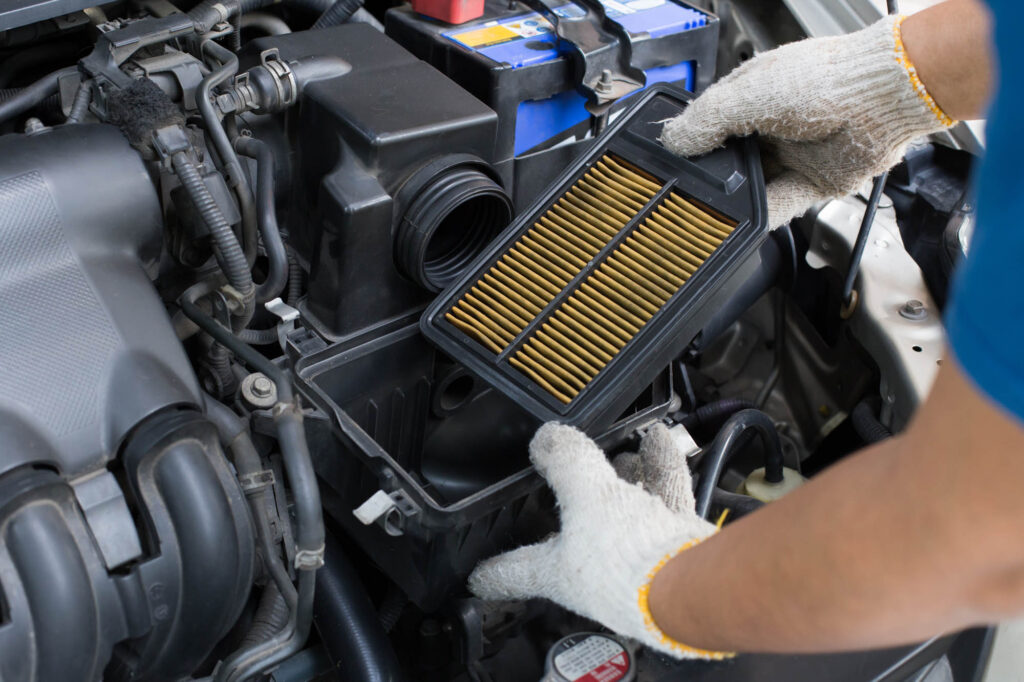Your vehicle’s dashboard has all the information you need when driving. It has a fuel gauge, temperature gauge, odometer, and warning lights that could illuminate when something goes wrong.
The dashboard also has your tachometer, which tells you how fast the engine is running. The tachometer measures the engine’s revolutions per minute (RPM).
Like most gauges, there’s a needle on the tachometer that moves depending on how fast you’re going. In most cases, the tachometer has numbers ranging from zero to nine. Multiply those numbers by a thousand to get your engine’s speed.
There are, however, some instances where the tachometer can behave erratically, causing the RPM to spike and fall intermittently.
You might not notice anything wrong with your vehicle at first, but fluctuating RPM readings can actually mean a few things.
What Does It Mean When Your RPM Jumps?

Here are 10 possible reasons why your car’s RPM keeps jumping.
Malfunctioning Idle Air Control Valve
A defective idle air control valve can contribute to higher RPMs and fluctuations, which will be reflected on the tachometer.
An idle air control valve is usually found in most port fuel injection systems. This valve regulates idle bypass air, controlling engine idle speeds, and prevents the vehicle from stalling when there are changes in engine load.
Faulty Throttle Pedal Position Sensor
The throttle pedal position sensor sends throttle position signals to the powertrain control module (PCM). In most cases, a throttle assembly has two of these sensors一one acts as a fail-safe measure while the other is used for diagnosis.
The throttle pedal position sensor monitors the position of the throttle plate. The PCM also uses the information from this sensor to calculate the right amount of fuel to deliver to the injectors.
If there is poor contact with the wiper, the sensor will display inaccurate and erratic readings, which might cause the needle on the RPM gauge to jump when accelerating.
This can happen in older vehicles because there is no mechanical connection between the throttle pedal and the throttle itself. As a result, the PCM only relies on the data from the pedal position sensor when monitoring idling and driving conditions.
Vacuum Leaks
The electronic throttle control (ETC) system usually compensates for many vacuum leaks. In some instances, the system will move the throttle to achieve the ideal idle speed to make up for the leak.
If there are vacuum leaks, the electronic throttle control (ETC) system will try to correct the engine’s operation.
Unfortunately, vacuum leaks are unmetered air that the computer doesn’t know about, so the ETC system won’t be able to adjust idling conditions and keep the vehicle running smoothly.
Some vacuum leaks can cause unmetered air to enter the engine and an interrupted intake manifold, especially when the leak is too big.
Vacuum leaks are unmetered air that the computer doesn’t know about, so the ETC system won’t be able to adjust idling conditions and keep the vehicle running smoothly.
–Anthony Harlin, ASE Certified Master Automobile Technician
Clogged Fuel Injectors
Fuel injectors atomize liquid gasoline to convert them into small droplets. These droplets are then mixed with the air that enters the engine.

The PCM controls the fuel injectors, particularly during their “on” time.
Over time, the injectors can get clogged due to grime and dirt buildup. The blockage can result in difficulties when accelerating and other irregularities in engine speed.
Faulty Spark Plugs
Spark plugs kickstart the fuel combustion process. Their threads also create a gas-tight seal with the cylinder head.
There are a few common reasons why a spark plug could fail: carbon fouling, oil fouling, and normal wear and tear.
Weak ignition system output, excessive idling, and fuel system faults can cause the spark plugs to develop black carbon soot.
Meanwhile, worn or broken piston rings, worn-out valve guides, and defective valve stem seals can lead to oil fouling.
Transmission Problems
Erratic RPM readings can also mean that something is wrong with the transmission.
The transmission has all the gears and assemblies that let your vehicle accelerate. It provides high torque output at low speeds for acceleration and lower torque output but at higher speeds for maximum fuel economy at highway speeds.
If there’s a leak somewhere in the transmission, the torque converter and gearbox can slip.
Faulty Crankshaft Position Sensor
The crankshaft position sensor helps the crankshaft read basic timing signals. This sensor eliminates ignition timing variations that can damage internal components and detects variations in the crank speed whenever there’s an ignition misfire.
A damaged crankshaft position sensor negatively affects ignition timing, which can throw off RPM readings.
Clogged Air Filter

A clogged air filter can significantly reduce the engine’s efficiency because less air volume will enter the engine.
The PCM monitors the throttle angle and mass air flow (MAF) sensor to determine how much air is passing. From there, the computer will calculate the air-fuel ratio. If there isn’t enough air, the engine won’t run properly.
Most manufacturers recommend replacing the air filter every 30,000 miles (or 50,000 km). If the vehicle is driven under dusty road conditions, the air filter should be replaced more frequently.
Faulty Mass Air Flow Sensor
The mass air flow (MAF) sensor uses relative humidity, altitude, and outside air temperature to calculate the air volume delivered to the engine.
If the PCM receives inaccurate signals from this sensor, the engine could be at risk of experiencing performance issues.
Damaged Tachometer
In some cases, a fluctuating RPM reading simply means there are issues with the tachometer’s wiring.
If that’s the case, those who are driving an automatic transmission will have almost nothing to worry about, considering their vehicles shift gears automatically.
Manual transmissions, on the other hand, usually need a functioning tachometer because many drivers refer to the readings when shifting gears. Tachometers inform drivers if they’re red-lining, which means the transmission is being overworked because the wrong gear is engaged.
Preventive Measures
The reasons for a fluctuating RPM reading can usually be attributed to worn-out parts that weren’t replaced on time. Failure to keep up with preventive maintenance tasks like oil changes and filter replacements can also cause similar problems.
So if you want to avoid the hassle that comes with a jumping RPM reading, always stick to your vehicle’s maintenance schedule.
There might also be instances where parts can fail suddenly without warning. Once this happens, make sure to have a trained professional take a look at your vehicle right away.
Leaving problems unaddressed for quite some time can cause other parts to get damaged, which can lead to an even more expensive repair bill.
Get Replacement Engine Components Online
After some time, engine components like spark plugs, mass air flow sensors, and throttle position sensors will need to be replaced. When these components are worn, your engine’s RPM might become erratic. Your engine might show this relatively minor issue before the problem worsens. So, you should replace run-down engine components. Good thing you can easily get new parts here at CarParts.com.
CarParts.com is a one-stop shop for all kinds of engine components including spark plugs, mass air flow sensors, throttle position sensors, and many others! Our auto parts are carefully selected by professionals to ensure they’re high-quality and durable. At the same time, they’re available in our catalog at competitive prices. You won’t have to break the bank to get your hands on some new parts.
Don’t wait until engine problems worsen before getting new parts. Shop for a new throttle position sensor, mass air flow sensor, and spark plugs, and restore your vehicle today!
Any information provided on this Website is for informational purposes only and is not intended to replace consultation with a professional mechanic. The accuracy and timeliness of the information may change from the time of publication.


















